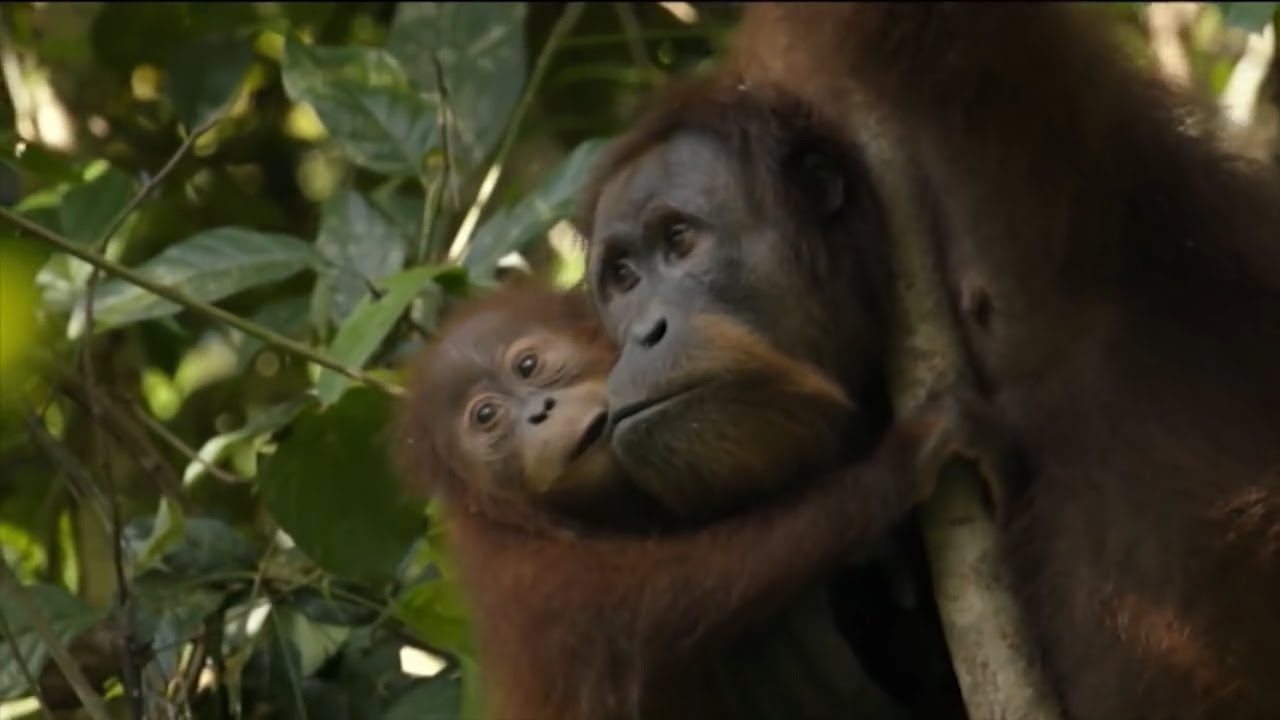Information Report about Two Animals
Summary
TLDRThe video introduces two species: the orangutan and the helmeted hornbill. Orangutans, known as 'man of the forest,' are the largest arboreal mammals, living in Borneo’s forests and swamps. Their powerful arms and hands help them navigate the trees. They face threats like habitat loss and illegal hunting. The helmeted hornbill is a large bird native to Indonesia's tropical forests. It has a long tail, a distinctive laugh, and consumes fruits and small animals. The species faces threats from forest loss, lack of conservation, and hunting.
Takeaways
- 🦧 The name 'orangutan' means 'man of the forest'.
- 🦧 Orangutans are the largest arboreal mammals, with the scientific name *Pongo pygmaeus*.
- 🦧 They have long, powerful arms and gripping hands and feet, which help them move through trees.
- 🦧 Orangutans are one of the smartest primates and can range in height from 1 to 1.4 meters, weighing between 29.9 to 99.79 kg.
- 🦧 They inhabit Borneo's swamps and forests, often coming down to the ground to explore.
- 🦧 Orangutans sleep in trees at night and relax during the day, feeding on lychees, mangosteens, and figs.
- 🦧 One of the major threats to orangutans is habitat loss due to deforestation, as well as illegal hunting.
- 🦅 The helmeted hornbill (*Rhinoplax vigil*) is a critically endangered bird found in Indonesia.
- 🦅 The bird has a 190 cm length, a 90 cm wingspan, and weighs around 3 kg. Males have a red patch on the neck, while females have a bluish-white patch.
- 🦅 Helmeted hornbills live in forests up to 1,500 meters above sea level and face threats from habitat loss, hunting, and lack of conservation programs.
Q & A
What does the name 'orangutan' mean?
-The name 'orangutan' means 'man of the forest'.
What is the scientific name of the orangutan?
-The scientific name of the orangutan is Pongo pygmaeus.
Why are orangutans considered the largest arboreal mammals?
-Orangutans are the largest arboreal mammals because they spend most of their lives in trees and are the largest animals to do so.
How do orangutans move through the branches?
-Orangutans use their long, powerful arms and their ability to hold objects with both their hands and feet to move through the branches.
What is the height and weight range of orangutans?
-Orangutans vary in height from 1 to 1.4 meters and weigh between 29.9 and 99.79 kilograms.
Where do orangutans live, and what is their habitat?
-Orangutans live in the swamps and forests of Borneo.
What threats do orangutans face in the wild?
-Orangutans face threats from habitat loss due to deforestation and illegal hunting.
What is the scientific name of the helmeted hornbill?
-The scientific name of the helmeted hornbill is Rhinoplax vigil.
What distinguishes male and female helmeted hornbills visually?
-Male helmeted hornbills have a red featherless patch on their necks, while females have a bluish-white patch.
What are the primary threats to helmeted hornbills?
-Helmeted hornbills are threatened by forest loss, a lack of conservation programs, and frequent hunting.
Outlines

此内容仅限付费用户访问。 请升级后访问。
立即升级Mindmap

此内容仅限付费用户访问。 请升级后访问。
立即升级Keywords

此内容仅限付费用户访问。 请升级后访问。
立即升级Highlights

此内容仅限付费用户访问。 请升级后访问。
立即升级Transcripts

此内容仅限付费用户访问。 请升级后访问。
立即升级浏览更多相关视频

Harus Tau! Fakta Unik Burung Rangkong yang Misterius Tapi Romantis - Rangkong Badak / Enggang

Orangutan untuk Indonesia yang lebih Sustainable

Wildlife Conservation | Explained in 3 Minutes #04

13 Burung Rangkong Indonesia yang Belum Kamu Tahu

Aku Masih Ada Di Sini (Mengenal Hewan Langka) - Roots & Shoots 6.1

Tipe Fauna yang Ada di Indonesia - Fauna Asiatis | Peralihan | Australis - Garis Wallace dan Weber
5.0 / 5 (0 votes)
